Even though it may be cold outside in Central Florida right now, it is a perfect time to start planning for that new or redesigned patio. You can enjoy a patio this coming Spring and Summer and for many years into the future. We have the benefit of enjoying the outdoors for far longer throughout the year here than in most of the country. While we are snuggled up avoiding the cooler temperatures outside, we can begin to take the first steps in our patio planning. Not sure where to start? Here are some great tips and considerations for you to start your planning.
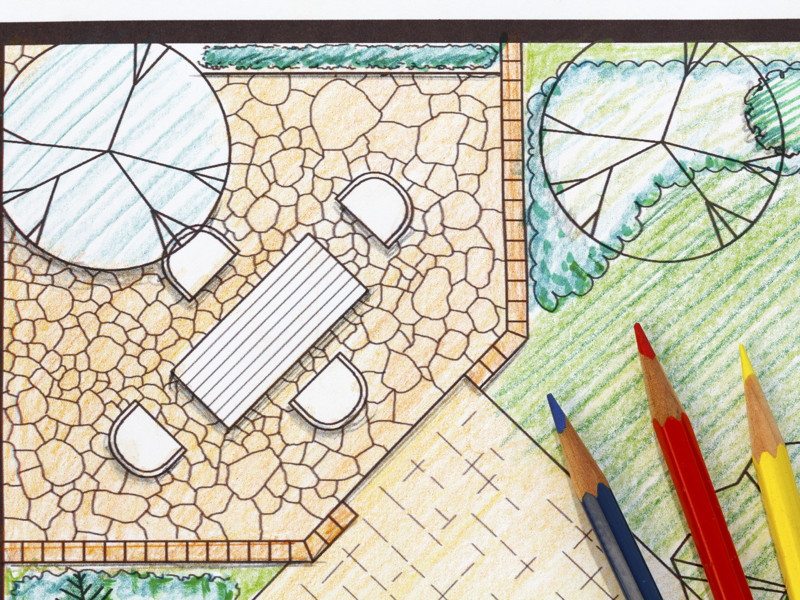
Functionality
The very first step to patio planning is to consider what purpose(s) you want it to serve. Do you want to host large parties or family gatherings? Rather, do you require a small, intimate space for morning coffee for two or a quiet meditation spot? Deciding the functionality for your patio area is first on your checklist. Making this first decision will lead you to the next steps of location, size and layout.
One of the best design tips we’ve heard in a long time comes from Designer/Contractor Scott Cohen in an article on ConcreteNetwork.com. Scott says that placing one large patio at the rear of your home can be a big mistake. Instead, consider breaking up the space into smaller gathering areas or “outdoor rooms”. This can allow for ease of flow in entertaining as well as smaller, more private areas for conversation. Whether during a big party or just for relaxing with your spouse or a friend, people tend to gather in more intimate, informal areas. You can also create an individual oasis designed with just your favorite things for escaping into your own space when you need a breather from family-life chaos.
TIP: If you plan to use your patio for entertaining frequently, you will want to be certain that a portion of your patio is either accessible to your kitchen or creates an outdoor kitchen area for ease in serving your guests. You will avoid a lot of frustration in trekking back and forth inside into your kitchen to replenish your refreshments.
Location, Location, Location!
As we said in our first step, people usually think of a patio as a big area right off the back of their home. In reality, there are really so many other options to consider with just a little creativity and knowledge. A good exercise in determining the location of your patio is to walk your property. Assess your yard. Be aware of any major slopes that may be a challenge (or require additional construction of retaining walls), consider sun and shade areas, property or fence lines and how close your neighbors are in proximity to your proposed location.
Another detail most people don’t think about is the aesthetic of your patio from different vantage points. While the main purpose of a patio is to add a functional outdoor space, it also becomes a visual aspect of your yard. While walking your area, consider views from the patio as well as views OF the patio from different areas including the inside of your home or areas of lawn beyond your patio. This is especially helpful when designing for a large yard or property that meets and incorporates any waterfront.
The last thing to consider when assessing your location is any existing or future landscape plans. You are not held within the boundaries of existing landscaping. It is extremely helpful when designing your patio to consider the future. Any plans for additional landscaping, walkways or even pool additions can change your patio design drastically. By taking these into account from the beginning, you can plan and grow into creating your ultimate backyard oasis without the need to destroy or redesign any previous work. This will also result in big savings in the long run. Your Orlando Area Landscaper can assist you in this process and is a wonderful resource when it comes to planning an overall design for your space. Whether you DIY or hire someone, having a master plan is vital. As an additional resource, check out our Landscape Assessment & Planning Checklist.
Size & Layout
Once you have decided what purpose(s) your patio will serve and where it will be located, the next step is to consider size and layout. HGTV offers some great design ideas!
One of the biggest mistakes made when designing a patio is the size. The amount of space for your patio needs is often underestimated. Whether going big or just large enough to create a small outdoor eating/gathering space, be sure to plan for enough space for furniture and movement. How many times have you been to someone’s patio and your chair hits dirt when you pull it away from the table, or you have to strategically place your chair so you don’t sink one leg into sand? This are all factors in sizing your patio. Movement and maneuvering around patio furniture is ofter not given the attention it deserves when patio planning.
Layout is equally as important as it will affect the amount and sometimes, type of materials. Are you looking to go geometrically square or rectangle to surround the back exterior of your home? While this may save some in materials, it can be rather boring too. Consider some curved lines. You can easily add some curvature to the edges of your patio to create movement and flow with nature in creating landscape areas now or into the future. Curved lines also add an element of visual interest to your space from other vantage points in the yard as well as from indoors.
For this step, we recommend using a Professional Landscaper for design. You can find some good Landscape Design Software online as well, but it helps to have the expertise of a professional when choosing size and layout. Landscape Designers and Installation Professionals have vast experience when laying out patios and will have a depth of knowledge when it comes to any hurdles or challenges that your specific space may contain that could affect the overall design. The last thing you want to do is get to the installation and discover that your design just won’t work because of some unforeseen issue.
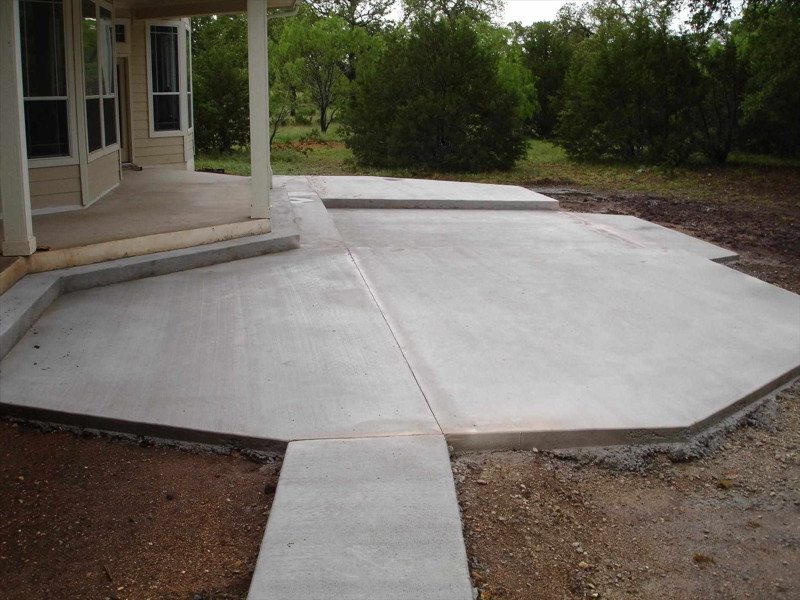
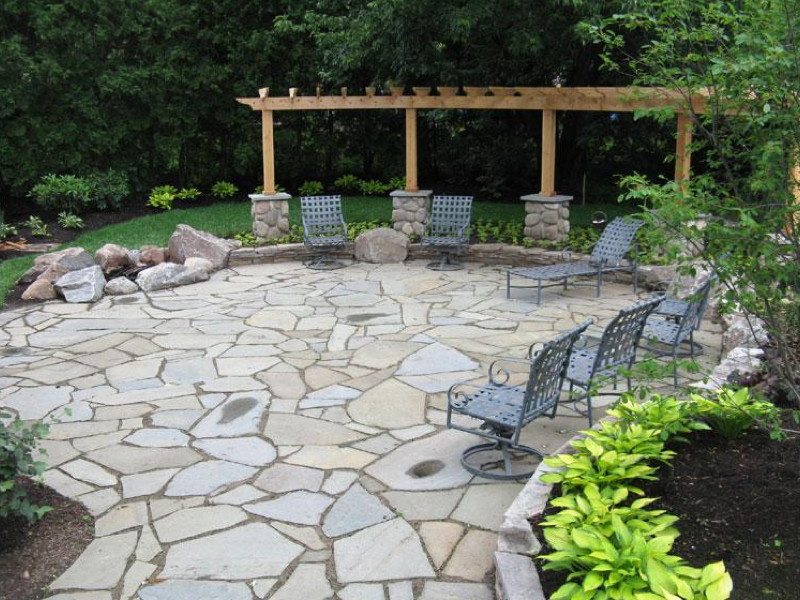
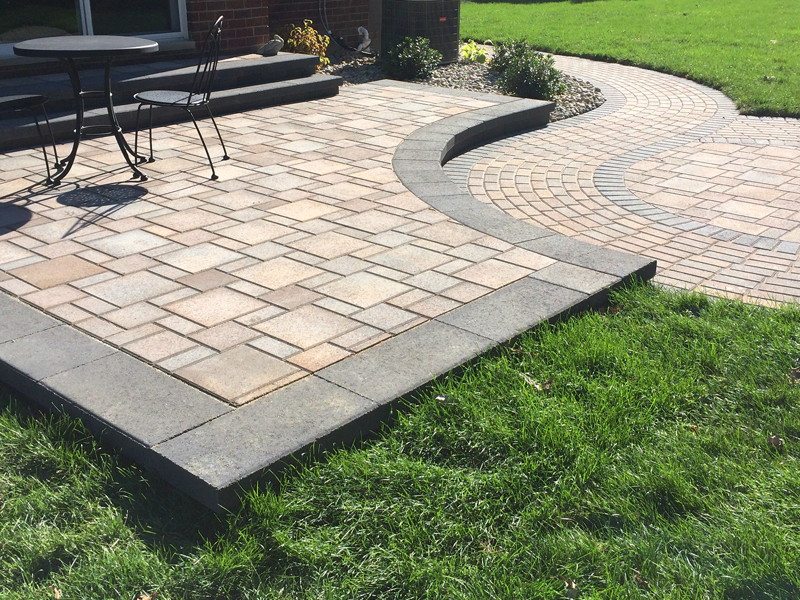
Materials
There are many different varieties of materials to choose from when patio planning. You want to be sure to choose a material that will complement the material, color and style of your home. If you have a traditional, stately home, you may want to avoid contemporary or trendy modern materials.
Some of the various materials available include;
- Concrete – while plain concrete can be pretty boring, you can considering dying it or using a stamping method to give it some texture and contouring. While it may be plain, concrete is a very inexpensive option that can be dressed up.
- Natural Stone – this is a very popular but also pricey option. Natural stone tends to complement both the nature surrounding your home as well as your landscaping. Coming in so many varieties of color, shape and size, natural stone can fit just about any home decor.
- Brick Pavers – are a bit more cost effective and also come in a variety of colors and textures but overall are pre-cut and uniform in size. If you decide on brick pavers (or reclaimed brick), be sure to break up the space with landscaping beds or potted plants give your patio a more comfortable feeling as pavers can take on a very industrial look in wide open spaces.
Make it a combination! You can also combine materials when creating your patio. If you decide to be this daring, be sure your materials complement each other as well as your home. We also recommend an Orlando Landscaping professional to help you with this as transitioning between materials can be very challenging. The photo below is a beautiful example of combining minimal natural stone with pavers to give a more sophisticated look to your patio while still remaining cost effective.
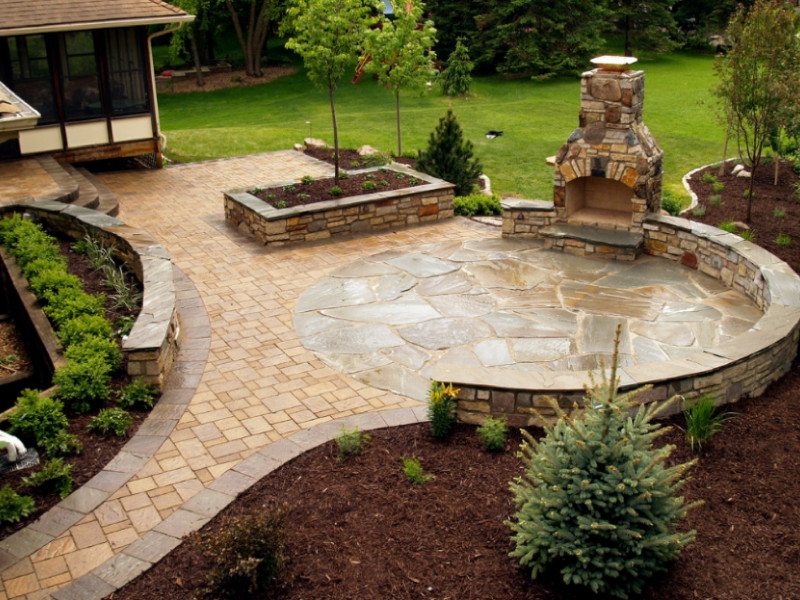
Extra Features
One of the last things to consider before moving forward in the patio planning process is those incredible extra features. It is much easier to incorporate such things in the planning and design phase rather than try to make them fit into an existing patio. Just a few of the extra features you can consider are:
- Fire pit or Fireplace or both for warmth, warm light and ambiance after dark.
- Outdoor Kitchen help to prepare for those large parties or to cook and enjoy family dinners outdoors.
- Lighting Features around the patio help create ambiance and edging with a glow during all seasons.
- Water Features are relaxing and can help to drown out any noise issues such as a busy street.
- A Trellis can add shade and provide privacy from a second story or neighbor’s view.
There is so much to consider when patio planning, but with these few steps to get you started, you will be well on your way to creating your very own backyard oasis. Keep up the daydreaming while it’s still cold outside and be sure to make lots of notes and save pictures of your ideas. When the weather is a little warmer, take your plan to action! You will be sure to have a picture perfect patio by the end of Spring!





